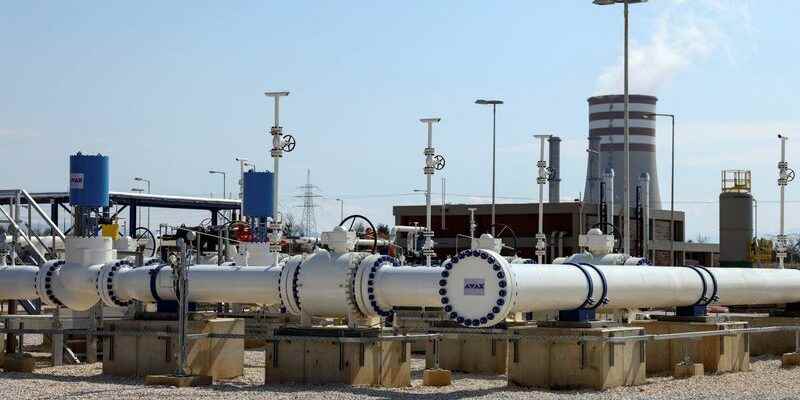WHY HIGH PRICES?
Energy companies pay a wholesale price to buy the gas and electricity they sell to consumers. As in any market, this price can go up or down, depending on supply and demand.
In general, prices rise in response to higher demand for heating and lighting in winter, and fall in summer.
Prices began to rise above historically normal levels last September and have spiked further following supply disruptions related to Russia’s invasion of Ukraine which began on February 24.
Just before the start of the war, the German government shut down the Nord Stream 2 gas pipeline which would have doubled the amount of Russian gas shipped to Europe. In July, Russia reduced the volumes pumped by Nord Stream 1 to 20% of its capacity, citing maintenance problems.
The German government said it was a pretext used by Moscow to retaliate against Western sanctions imposed due to the war in Ukraine.
The French nuclear blackouts and the heat wave that hit Europe this summer also stimulated demand.
Benchmark European gas prices at the Dutch TTF hub have risen nearly 350% in one year, while first-year German and French electricity contracts have jumped 540% and 790% respectively.
HOW LONG CAN THIS LAST?
Many gas market analysts expect prices to remain high for the next two years or more.
Global competition for gas and coal this winter should keep prices from falling. Any further disruption to Russian gas supply, such as a complete shutdown of Nord Stream 1, would support prices.
Although European countries are on track to fill gas storage sites to a minimum level of 80% by October 1, a particularly cold winter could drain these reserves quickly.
WHY ARE RETAIL PRICES RISING?
Many energy providers pass on higher wholesale costs to consumers through their retail tariffs. In Great Britain, for example, on a dual-energy bill (electricity and gas), the wholesale cost can represent 40% of the total.
Suppliers can buy energy on the wholesale market on the day of delivery, a day in advance, and up to months or seasons in advance, as they try to predict when prices will be lower and what quantity to buy to cover the needs of their customers.
If suppliers do not buy enough energy, they may have to buy more at a price which may be higher, depending on market movements.
GOVERNMENT ACTION
In July, the European Union asked its member states to voluntarily reduce gas demand by 15% this winter, with the possible introduction of mandatory reductions.
Several European governments had already taken measures to reduce consumption before this announcement, such as laws on air conditioning and heating levels in public and commercial buildings.
Germany has passed the second stage of a three-stage gas emergency plan. The third stage plans to reduce the supply of the industry.
It will also introduce a gas tax to spread the high costs of replacing Russian gas among all end consumers from October, but this could increase German energy bills by an extra 480 euros ($489.46) a year.
Governments have also announced measures such as subsidies, the abolition of environmental levies or VAT on invoices and price caps.
Britain, which relies heavily on gas for heating, introduced a price cap on most used energy tariffs in 2019, which sets a maximum charge per unit of energy and limits supplier profits to 1.9% .
However, it is estimated that the cap will rise to more than 4,200 pounds ($5,075.28) per year in January, a 230% increase on the previous year.
WHAT CAN CONSUMERS DO?
Households represent 30 to 40% of gas demand in Europe. Around 80% of household gas demand is for heating, the rest for hot water and cooking.
Usually, demand is highest during the winter gas season, which runs from October to March.
According to Bernstein analysts, certain measures taken by households could reduce household gas demand by a third.
Lowering the thermostat one degree from 20 to 19 degrees Celsius could reduce household gas demand by about 7%. Lowering the temperature another degree could reduce household gas demand by a further 7%.
Wearing a thick sweater at home during the winter could save another 4% of household demand.
Delaying the start of the heating from October to November and/or stopping the heating in February rather than in March could save 3 to 6%. turning off radiators in unused rooms, replacing shower heads with water-saving ones and only using boilers twice a day could save another 7% of demand.
In Britain, the ‘Don’t Pay UK’ campaign is calling for energy bills to be reduced to affordable levels and urging people to cancel their direct debit energy payments from October.
($1 = 0.9807 euros)
($1 = 0.8275 pounds)
